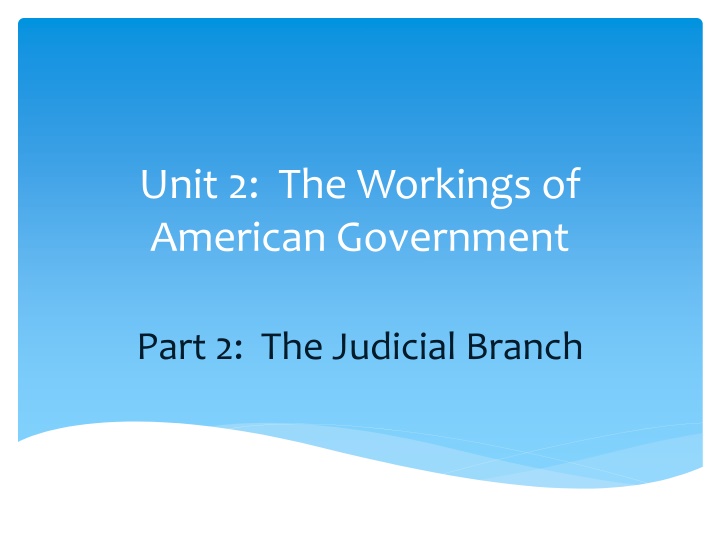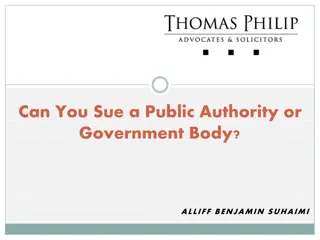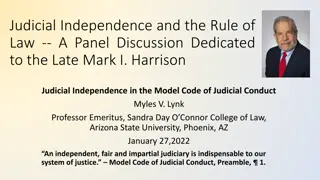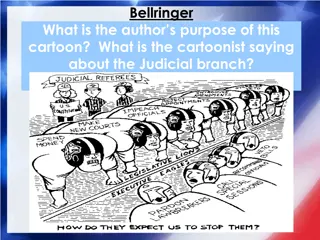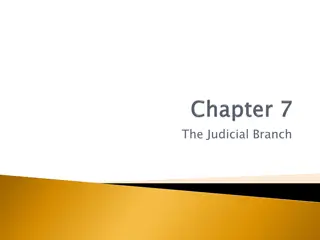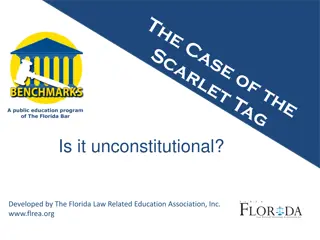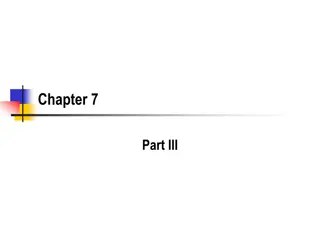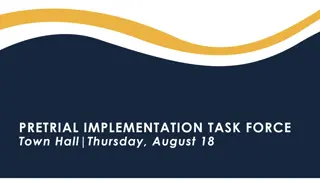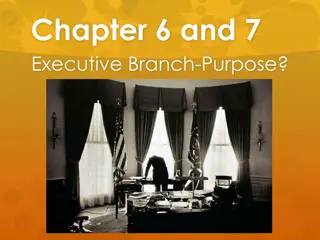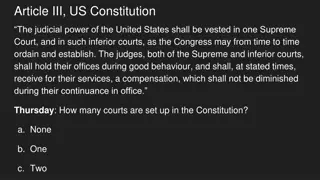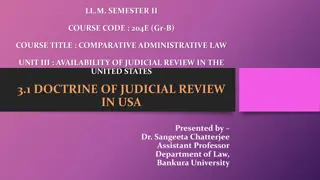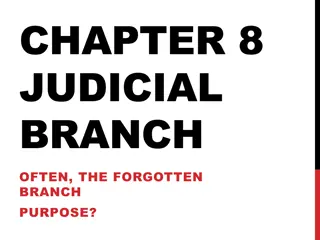The American Judicial Branch: Structure and Judicial Review
The American judicial system consists of District Courts, Appellate Courts, and the Supreme Court. District Courts handle initial cases, Appellate Courts hear appeals, and the Supreme Court is the highest authority. Justices are nominated by the President and confirmed by the Senate. Judicial review, illustrated by Marbury v. Madison, empowers the Supreme Court to interpret the Constitution and declare laws unconstitutional.
Download Presentation

Please find below an Image/Link to download the presentation.
The content on the website is provided AS IS for your information and personal use only. It may not be sold, licensed, or shared on other websites without obtaining consent from the author.If you encounter any issues during the download, it is possible that the publisher has removed the file from their server.
You are allowed to download the files provided on this website for personal or commercial use, subject to the condition that they are used lawfully. All files are the property of their respective owners.
The content on the website is provided AS IS for your information and personal use only. It may not be sold, licensed, or shared on other websites without obtaining consent from the author.
E N D
Presentation Transcript
Unit 2: The Workings of American Government Part 2: The Judicial Branch
The National Judiciary Structure District Courts Most local level of federal courts 94 District Courts First time cases only NO APPEALS Hears the most cases of any level
The National Judiciary Structure Appellate Courts Courts of appeals And ONLY appeals 12 Circuit Courts PLUS Federal Circuit Court Nationwide reach Located in DC
The National Judiciary Structure The Supreme Court 9 Justices Takes appeals by selection Sometimes takes original cases
The Supreme Court Justices Nominated by the President (Executive Branch) Confirmed (or rejected) by the Senate (Legislative Branch) Serve until they decide to resign, retire or when they die Can only be removed for high crimes, treason and misdemeanors Must go through the impeachment process to be removed
Judicial Review William Marbury Was appointed Justice of the Peace of Washington D.C. by President John Adams Got the position because he was loyal to the Federalist Party President Adams appointed him late in the night of his last night in office Adams had lost the presidency to Thomas Jefferson
Judicial Review James Madison Was Secretary of State for new president, Thomas Jefferson Madison and Jefferson belonged to the Democratic-Republican Party Madison found Marbury s appointment signed by the past president, Adams, on his desk undelivered! Jefferson told Madison NOT to deliver it
Judicial Review Marbury sues Madison in the Supreme Court Wants to FORCE Madison to deliver his appointment Becomes known as Marbury v. Madison The Supreme Court Led by Chief Justice John Marshall Unanimously found AGAINST Marbury Said the law Marbury was using to sue Madison was unconstitutional A NEW POWER IS BORN!
Supreme Court Decisions Decisions are called Opinions Majority Opinion The winning opinion The Opinion of the Court The finding of most of the justices Concurrent Opinion Those who agree with the outcome But for different reasons Dissenting Opinion Those who oppose the outcome The losing opinion
Judicial Restraint vs. Judicial Activism Judicial Restraint Judges need to show self-control Judges should only look at the letter of the law Judges should only look at precedent Judicial Activism Judges should look at the letter of the law AND the intent of the law Judges should look at precedents AND the time period it began Judges need to revise laws and precedents with changing times
Textbook Readings Pages 520 524 Page 527 Page 528 531 Pages 532 534 Page 537 (5 pages) (1 page) (4 pages) (3 pages) (1 page) Total of 14 pages
